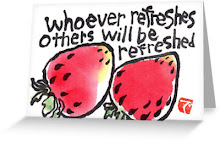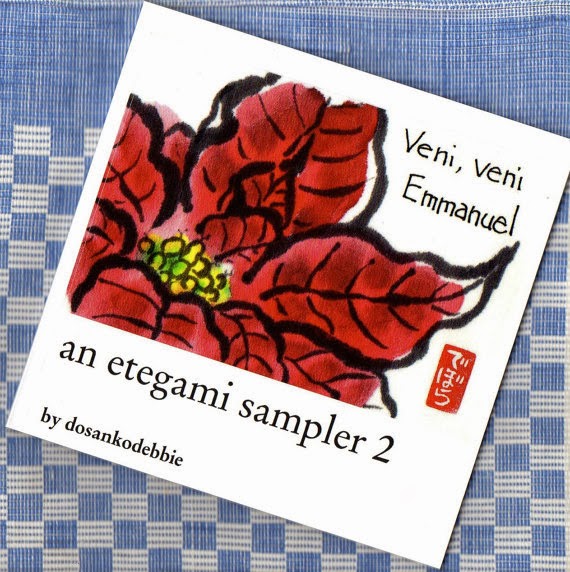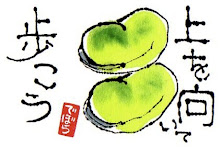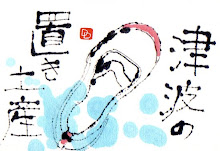Wednesday, April 26, 2017
golden week
In Japan we are about to enter Golden Week, when four national holidays are concentrated in a period of seven days. The last of these holidays is Kodomo-no-hi (Children's Day, sometimes called Boy's Day) on May 5.
Traditionally the festival celebrates the healthy growth of boys --girls having been covered by the Hinamatsuri Festival on March 3, which is not a national holiday. It is celebrated with displays and food that symbolize strength, perseverance, and bravery. These symbols include ancient samurai helmets, the Japanese iris, kashiwa-mochi (sweet sticky rice wrapped in an oak leaf), chimaki (sticky rice wrapped in bamboo leaves), and most famously, koinobori (carp-shaped windsocks) that are traditionally flown from flagpoles set up next to the house for that purpose.
These etegami are works-in-progress, but I'll try to post a few completed versions soon. In the meantime, you might like to do a search on this blog for earlier etegami inspired by Children's Day. (Use the "search this blog" box in the sidebar).
Wednesday, April 5, 2017
more fun with etegami frames
It started with a frenzy of decluttering, except that I got distracted by some old Japanese songbooks that were destined for the recycling bin. Without a clear idea of where I was headed with it, I cut some of the colorful pages into strips, and wove them together into mats. I glued them to pieces of corrugated cardboard cut out in rectangles and circles, trimmed the excess paper, and brushed some glossy sealer over the woven paper surface to anchor the strips. After that, my mind went blank, so I set the project aside for the next two months.
Then, last week, a surprise package arrived from an etegami friend in southern Japan. It was a picture frame she had made from layers of corrugated cardboard. You can see it on my received mailart blog. I was too lazy to imitate her design, but it did give me ideas for what to do with my unfinished paper strip mats.
My original idea had been to display my etegami on the "mats," the four corners of the etegami held down by elastic string threaded through the back of the mat, much like the typical etegami frames sold in Japanese shops. But now I'm experimenting with the possibilities presented by layering two or more sheets of corrugated cardboard with a window cut into the top layer, giving the frame some depth.
 |
| righthand etegami affixed to top of mat; lefthand etegami nestled in a hole cut into the mat |
Subscribe to:
Posts (Atom)

































